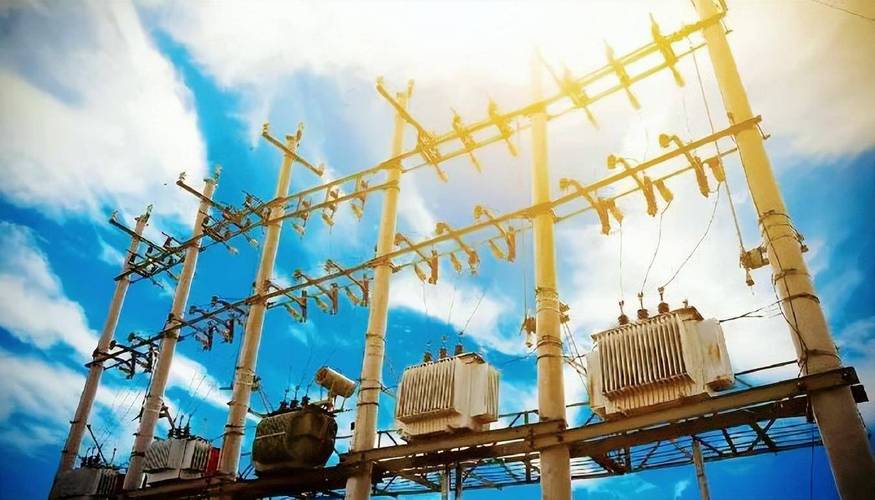
In the current era of rapid technological development, AI has become a global focus. With the AI craze sparked by OpenAI's ChatGPT, the United States, as the forefront of technological development, has seen a large number of technology companies actively engage in the AI field, continuously increasing their investment and construction in data centers, striving to seize the initiative in this technological revolution. As a key infrastructure for the operation and development of AI technology, data centers consume an extremely large amount of electricity. According to the International Energy Agency (IEA), global data center electricity consumption is expected to more than double by 2030, with the United States being particularly notable in this trend.
It is precisely against this backdrop that the US electricity market is facing unprecedented challenges. According to a report by the energy affordability advocacy group PowerLines, US utility companies have applied for regulatory approval to raise electricity prices in the first half of 2025, involving a total amount of 29 billion US dollars. This figure represents a 142% increase compared to the same period last year. Such a significant increase in electricity prices is extremely rare in the development history of the electricity market and has also drawn extensive attention and discussion from all sectors of society.
The power supply system in the United States is composed of numerous public utility companies, which provide electricity services to commercial and residential users in different regions. Nowadays, many large public utility companies are actively promoting the increase of electricity prices. For instance, National Grid, which supplies power to customers in New York and Massachusetts, was approved in April to increase its rates by 708 million US dollars, which means that the monthly cost for each customer will increase by up to 50 US dollars. PG&E, which serves 5.5 million commercial and residential customers in northern and central California, requested a $3.1 billion increase in electricity bills in April. Oncor, which serves 13 million customers in Texas, proposed an increase of $834 million in June. The North Indiana Public Service Company was allowed to increase the rate by $23 per customer per month, totaling $257 million.
The reasons given by these power companies for the price increase mainly fall into two categories. On the one hand, with global climate change, extreme weather events are becoming increasingly frequent, which has caused more severe damage to power infrastructure. To repair the damaged facilities, the power company needs to invest a large amount of money. On the other hand, the power grid in the United States was built a long time ago, and the problem of aging has become increasingly prominent, making it difficult to meet the rapidly growing electricity demand at present. To support the electricity demand of the constantly developing economy and emerging technologies, it is necessary to carry out large-scale upgrading and transformation of the power grid and make capital investment.
However, this price increase measure has sparked strong opposition from consumer rights advocates. They believe that ordinary American families should not bear additional costs due to the surging demand for data centers. After all, the benefits brought by the development of AI technology are mostly reaped by large technology companies, while ordinary consumers have to face the increase in living costs due to the rise in electricity prices. This is obviously unfair.
In this controversy over the increase in electricity prices, solutions such as "high-load electricity prices" and clean energy transition agreements have gradually come into people's view. "High-load electricity price" refers to charging excess electricity fees to large users in the power system. For instance, AEP Ohio submitted an application to the Ohio Public Utilities Commission in October last year, requesting that data centers collect an advance fee of 85% of the estimated monthly energy usage. Even if the actual electricity consumption decreases, the fee will not be refunded. If the project fails, an exit fee must also be paid. The Clean Energy transition agreement is a commitment by data centers to purchase clean energy through utility companies and provide financial support for new renewable energy projects. In May this year, the Nevada Public Utilities Commission approved Google's agreement to purchase electricity from Fervo Energy's geothermal power plant, which is the practice of this model.
The phenomenon that the development of AI has led to an increase in electricity costs not only reflects the imbalance in the supply and demand relationship in the US electricity market, but also reveals the contradiction between the development of emerging technologies and the traditional energy supply system. From a business logic perspective, it seems that power companies have no choice but to raise electricity prices in order to maintain operations and make necessary infrastructure investments. However, from the perspective of social equity, it is unreasonable to make ordinary consumers pay for the costs of technological development. In the future, how to meet the power demands of emerging technologies such as AI while ensuring the fairness and stability of power supply will be a problem that the United States and even the world need to deeply consider and solve. This is not only related to the healthy development of the electricity market, but also closely linked to the stability of the social economy and the well-being of the people.

On January 4th local time, Trump warned India that if it does not limit its purchase of Russian oil, the United States will continue to raise tariffs on Indian products. Trump's latest warning sent shockwaves through the Indian financial market in just one day.
On January 4th local time, Trump warned India that if it do…
In October 2025, the US trade deficit narrowed unexpectedly…
According to the British media CoinJournal, recently, due t…
In January 2026, US President Trump once again set his sigh…
Europe is facing a crucial strategic choice: In the face of…
On New Year's Day 2026, BMW China announced a "systematic v…